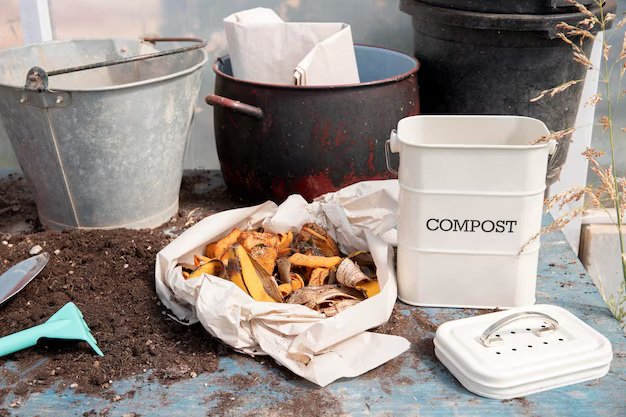Is Wood Ash Good for Plants?
Wood ash is the fine, powdery residue left when wood is burned. Chemically, it is rich in calcium oxide (CaO), potassium oxide (K₂O), magnesium oxide (MgO), and phosphorus pentoxide (P₂O₅)—all of which remain after nitrogen and sulfur volatilize during combustion. The calcium content typically ranges from 15 % to 33 %, potassium about 2.6 %, phosphorus up to 1.4 %, and magnesium around 1 % extension.uga.edu. These oxides contribute to a high pH—often between 10 and 13—which makes ash act as a rapid liming agent compared to traditional agricultural lime that changes soil pH slowly, often over months.
Recent agronomic studies confirm that in acidic soils, wood ash can increase nutrient availability and promote nitrogen mineralisation, leading to better plant growth in forage and crop trials. One comparison study found that fields treated with wood ash showed faster pH adjustment and, in some cases, greater yield improvements than those treated with ag‑lime, thanks to its fine particle size and reactive nature.
However, ash is nitrogen‑poor—burning volatilizes most nitrogen, so ash only contributes minor nitrogen by itself. Gardeners should understand that while ash supplies calcium, potassium, and micronutrients, it does not replace a balanced fertiliser regimen.

In This Article
- Evidence from Gardens and Farms: Real-World Outcomes
- Risks, Limits, and Best Practices
- When and How to Use Wood Ash Safely
- Conclusion
Evidence from Gardens and Farms: Real-World Outcomes
A field study in New England using wood ash on forage plots recorded increases in extractable potassium, calcium, magnesium, and phosphorus in soil, as well as biomass gains of up to 45 % versus plots limed only with limestone. Similarly, greenhouse experiments assessing ash application noted improved nitrogen mineralisation and growth in vegetable seedlings grown in acidic media.
Gardeners frequently report anecdotal success: one home gardener from Wisconsin described adding sifted hardwood ash to compost for several seasons and seeing healthier tomatoes, squash, and kale. She combined soil test results showing a pH of 5.8 with ash additions that raised pH to around 6.5—just right for those crops. She also noted a reduction in blossom end rot on tomatoes, which she attributed to increased calcium availability.
Extension experts echo these experiences. The University of Vermont recommends wood ash for soils below pH 6.0, pointing out that most vegetable and berry crops prefer 6.5–6.8 pH; ash helps reach that range and supports nutrient uptake. The Oregon State University Extension cautions that ash should not be applied to alkaline soils (pH above 7.0) or acid-loving plants like blueberries and rhododendrons. Users also mention that ash can act as a deterrent to slugs when scattered lightly around affected plants.
Risks, Limits, and Best Practices
While wood ash offers clear benefits, misuse can cause harm. Too much ash can raise soil pH excessively, blocking uptake of iron and other micronutrients and potentially inducing nutrient lock‑up. For instance, experts suggest that potatoes grown in over‑alkaline soils often develop more scab disease. There is also the risk of heavy metals in ash—from burning treated wood or contaminated sources—which can introduce cadmium, lead, or chromium into the soil; though typical concentrations in clean hardwood ash are low enough to avoid plant or human harm when used at recommended rates.
Best practice recommendations from extension services include: conduct a soil test every two to three years; only use ash from untreated, clean hardwood; sift ash to remove charcoal chunks; apply no more than 15‑20 lbs per 1,000 sq ft per year; mix ash into top couple of inches of moist soil; avoid windy or dry days; and do not apply ash at time of seeding due to salt burn risk on seedlings.
Here is a practical comparison of average nutrient contents and safe application guidelines:
| Nutrient / Property | Wood Ash (average) | Safe Application Rate |
|---|---|---|
| Calcium (Ca) | 15 %–33 % by weight | ~10–20 lbs per 1,000 ft² annually |
| Potassium (K₂O) | ~2.6 % | Mix thoroughly into soil |
| Phosphorus (P₂O₅) | ~0.5 % | |
| Magnesium (MgO) | ~1 % | |
| Soil pH effect | Raises pH rapidly (pH 10–13) | Only on acidic soils (pH < 6.5) |
| Nitrogen | Negligible | Supplement with N fertilizer separately |
When and How to Use Wood Ash Safely
Real-world gardeners and farmers who succeed with wood ash do so by following a thoughtful plan. First, test your soil’s pH and nutrient levels before applying any amendments. If soil pH is at or below 6.0 and crops like asparagus, lavender, kale, broccoli, or squash are on your list, then a modest ash application can gently raise pH toward the optimal 6.5–6.8 window.
Next, use only well-sifted ash from untreated hardwood sources, and avoid ash from painted, treated, or contaminated wood. Choose a calm, moist morning to scatter ash thinly (about one handful per square yard, or approximately 10–15 lbs per 1,000 ft²), then rake it into the top few inches. Do not apply ash directly around seedlings or delicate roots—always integrate it with soil or compost.
Mixing ash into compost can also be effective: adding wood ash up to 5% of total compost volume helps neutralise acidity in kitchen scraps and aids the composting process without risking too much alkalinity. Once composted, the ash-enriched compost can be used safely in beds at planting time.
Avoid repeated heavy applications year after year. Instead, treat ash as a maintenance amendment: once soil pH is in the ideal range and nutrient levels are adequate, stop adding it until testing shows pH drift. Monitor for plant symptoms like yellowing (iron deficiency), poor fruit set, or stunted roots—these can signal overshoot in alkalinity.
Conclusion
Wood ash can be a highly effective garden amendment when used judiciously. Drawing on real studies showing impressive pH adjustment and yield increases in acidic soil and gardeners’ everyday success stories, it clearly provides calcium, potassium, micronutrients, and liming capacity. But it lacks nitrogen, and overuse risks raising soil pH too high, harming sensitive acid-loving plants and reducing nutrient uptake.
Actionable summary:
- Always test the soil before use.
- Use only clean hardwood ash; never burn treated wood.
- Apply no more than 10–20 lbs per 1,000 ft² in any year.
- Mix into moist soil or compost, avoid direct contact with roots or foliage.
- Do not use around acid-loving species like blueberries or azaleas.
- Combine with nitrogen fertiliser where needed.
- Use wood ash sparingly as a maintenance tool, not a heavy fertiliser.
With these precautions in place and based on both scientific and real‑world evidence, wood ash can be a sustainable and cost‑effective way to enrich plant‑friendly soils without turning to commercial lime or potassium fertiliser.







